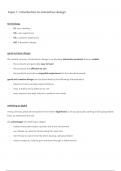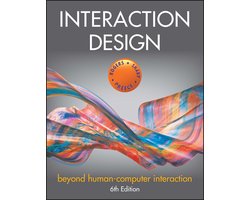topic 1: introduction to interaction design
terminology
– UI, user interface
– UX, user experience
– CX, customer experience
– IxD, interaction design
good and poor design
the central concern of interaction design is to develop interactive products that are usable
– the products are generally easy to learn
– the products are effective to use
– the products provide an enjoyable experience for the intended people
good and creative design can be described by the following characteristics
– based on how everyday objects behave
– easy, intuitive and a pleasure to use
– only requires one step actions to perform core tasks
switching to digital
many previous physical transactions have been digitalised, such as paying for parking and buying tickets
from an entertainment site.
the advantages of switching to digital
– makes many tasks easier, quicker and more convenient
– our details can also be stored ready for next time
– don’t have to wait in line like when buying a physical ticket
– easy to swipe qr code to gain entrance through a ticket barrier
,the disadvantages of switching to digital
– not everyone has a modern smartphone, such as older people and disabled people
– some people prefer paper tickets, since the process of accessing digital tickets can be stressful
– some people prefer not to divulge personal information online
– some people prefer to talk to real people when making a purchase
what to design
when designing interactive products, there are several things that need to be considered
– who is going to use the product
– how will they use the product
– when and where are they going to use the product
– what kind of activities are they doing when interacting with these products
a key question for interaction design
– how do you optimize a person’s interactions with a system, environment, or product so that they
support their activities in effective, useful, usable and pleasurable ways?
in interaction design, many decisions need to be made based on an understanding of people
– considering what people are good and bad at
– considering what might help people with the way they currently do things
– thinking trough what might provide quality experiences
– considering a person’s privacy concerns if data is being collected about them
– listening to what people want and getting them involved in the design
– using people-centred techniques during the design process
what is interaction design
interaction design, designing interactive products to support the way people communicate and interact in
their everyday and working lives
– original de nition, designing spaces for human communication and interaction (terry winograd,
1997)
fi
,we view interaction design as fundamental to many disciplines, elds, and approaches that are concerned
with researching and designing computer-based systems for people
– the main differences between interaction design and the other approaches come largely down to
which methods, philosophies and lenses they use to study, analyse and design products
– another way they vary is in terms of the scope and the problems they address
the main difference between interaction design and human-computer interaction is the scope on which
they operate
– historically, human computer interaction had a narrow focus on the design and usability of computing
systems
– interaction design was seen as being broader, concerned with the theory, research, and practice of
designing user experiences for all manner of technologies, systems and products
fi
, people centred design
people centred design involves understanding how people feel about a product and their pleasure and
satisfaction when using it, looking at it, holding it and opening or closing it
– an important aspect is the quality of the experience
– it is not enough that we build products that function, that are understandable and usable, we also
need to build joy and excitement, pleasure and beauty to people’s lives
understanding people
core characteristics of interaction design
– users should be involved throughout the development of the project
– speci c usability and user experience goals need to be identi ed, clearly documented and agreed to
at the beginning of the project
– iteration is needed trough the core activities
reasons for having a better understanding of people in the contexts in which they live, work, and learn
– it can help designers understand how to design interactive products that augment humans and match
their needs at the time and place of use
– it can help designers appreciate that one size does not t all; what works for one group of people
may be totally be inappropriate for another
– it can help the designers be be aware of both people’s sensitivities and their capabilities
– it can reveal incorrect assumptions that designers may have about particular groups and what they
need
– it can help the designers be aware of cultural differences, particularly for products intended for a
diverse range of groups from different countries
accessibility and inclusiveness
accessibility refers to the extent to which an interactive product is accessible by as many people as possible
– focus in interaction design is making products and services that accommodate people with
disabilities
fi fi fi






